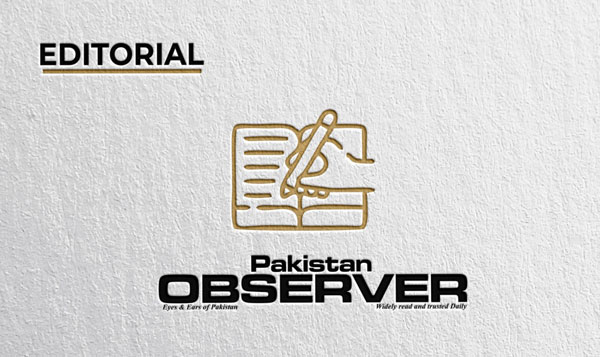THE incumbent coalition government deserves full credit for taking concrete measures for revival of the otherwise stalled project of Special Economic Zones (SEZs) under the China-Pakistan Economic Corridor (CPEC) initiative. Prime Minister Shehbaz Sharif, who performed the groundbreaking of the Islamabad Model Special Economic Zone on Tuesday, lamented that the project experienced a delay of five years because of lack of interest and commitment on the part of the PTI Government. He pointed out that despite finalizing the land and designs for the SEZs in Punjab, the previous government deliberately hindered progress of the project.
There is consensus among planners that the required focus on agriculture and industry can help overcome economic and financial challenges confronting Pakistan. The SEZs were planned with the objective of giving a boost to industrialization that is necessary to meet not only local needs for various products but also surplus for exports to earn the much-needed foreign exchange. The Special Economic Zones were an important component of the CPEC but strangely enough these were kept in cold storage despite verbal commitments to the cause of industrialization. This is classic but criminal negligence in view of the willingness of China to provide necessary assistance for development of these zones and that is why the Prime Minister has, once again, emphasized the need for signing of a Charter of Economy so that economic initiatives do not become victims of political changes in the country. It is the responsibility of the provincial governments to ensure availability of basic infrastructure and that of the federal government to attract investment in these zones. The Prime Minister regretted that in the past land allocated for establishment of industrial zones was misused for real estate projects but mere narration of facts would not change the ground realities until and unless those responsible for such criminal acts are brought to book. Similarly, we have been emphasizing in these columns that while provincial governments should be made to complete the development work in a time-bound manner, the investors should also be held accountable if they fail to set up industries at plots allotted to them. Despite all this, the goal of accelerating the pace of industrialization would remain a dream if the cost of doing business is not brought down which continues to surge with the passage of time because of internal and external factors. We cite the example of Bangladesh, which has set an export target of US $ 72 billion for the next year, but are not willing to follow similar policies and offer incentives to the industry. The Prime Minister has rightly emphasized that Pakistan should learn from China’s textile expertise, engage in joint ventures and import Chinese second-hand machinery to boost exports, particularly as China’s industry has become highly advanced. In fact, hundreds of Chinese companies and industries have active plans to shift their businesses overseas and they consider Pakistan as one of the preferred destinations for the purpose. However, the plan cannot materialize without provision of necessary facilities and incentives including supply of uninterrupted electricity and local and regional connectivity. The government should, therefore, prioritize development of all the industrial zones as originally envisaged under the CPEC without further delay besides expeditious completion of infrastructure and connectivity projects in Gwadar. Minister for Planning, Development and Special Initiatives Prof. Ahsan Iqbal has called for pushing the country’s exports to $100 billion, hoping that the 5Es framework as envisaged in the budget for the current financial year would help realize this objective. However, for this to happen, the Government, in close consultation and collaboration of all stakeholders, will have to remove hurdles in the way of boosting exports meaningfully. In this connection, Minister for Information Technology Aminul Haque, while expressing determination to push IT exports from the existing $ 2.6 billion to $15 billion over the next few years, has drawn attention to the bureaucratic mindset of considering only tangible items like tomatoes and potatoes as tradable, ignoring importance of online services like call centres and remittances from freelancers. It is because of this mindset as well as frequent disruptions in IT services and increased taxation that now even Pakistanis are basing their companies overseas. Therefore, there is dire need for an integrated approach for industrialization and to give a boost to exports. Now that we have a Special Investment Facilitation Council (SIFC), one hopes impediments in the way of investment would be removed through concerted efforts and coordination.










